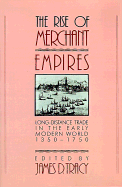Book contents
- Frontmatter
- Contents
- Preface
- Maps
- Introduction
- 1 Structural changes in European long-distance trade, and particularly in the re-export trade from south to north, 1350–1750
- 2 The growth and composition of trade in the Iberian empires, 1450–1750
- 3 The growth and composition of the long-distance trade of England and the Dutch Republic before 1750
- 4 France, the Antilles, and Europe in the seventeenth and eighteenth centuries: renewals of foreign trade
- 5 Productivity, profitability, and costs of private and corporate Dutch ship owning in the seventeenth and eighteenth centuries
- 6 The Dutch and English East India companies compared: evidence from the stock and foreign exchange markets
- 7 World bullion flows, 1450–1800
- 8 Merchant communities, 1350–1750
- 9 Economic aspects of the eighteenth-century Atlantic slave trade
- 10 Marginalization, stagnation, and growth: the trans-Saharan caravan trade in the era of European expansion, 1500–1900
- 11 The “decline” of the central Asian caravan trade
- 12 Merchant communities in precolonial India
- 13 Merchants without empire: the Hokkien sojourning communities
- Index
6 - The Dutch and English East India companies compared: evidence from the stock and foreign exchange markets
Published online by Cambridge University Press: 01 June 2011
- Frontmatter
- Contents
- Preface
- Maps
- Introduction
- 1 Structural changes in European long-distance trade, and particularly in the re-export trade from south to north, 1350–1750
- 2 The growth and composition of trade in the Iberian empires, 1450–1750
- 3 The growth and composition of the long-distance trade of England and the Dutch Republic before 1750
- 4 France, the Antilles, and Europe in the seventeenth and eighteenth centuries: renewals of foreign trade
- 5 Productivity, profitability, and costs of private and corporate Dutch ship owning in the seventeenth and eighteenth centuries
- 6 The Dutch and English East India companies compared: evidence from the stock and foreign exchange markets
- 7 World bullion flows, 1450–1800
- 8 Merchant communities, 1350–1750
- 9 Economic aspects of the eighteenth-century Atlantic slave trade
- 10 Marginalization, stagnation, and growth: the trans-Saharan caravan trade in the era of European expansion, 1500–1900
- 11 The “decline” of the central Asian caravan trade
- 12 Merchant communities in precolonial India
- 13 Merchants without empire: the Hokkien sojourning communities
- Index
Summary
The East India companies of the Dutch and the English represented the most successful examples of merchant organization in the early modern era. Both exploited the possibilities of long-distance trade in highly valued exotic goods from the Orient to western Europe as well as seaborne traffic in the Asian trading world and, eventually, the potential for extracting taxes and tribute within Asia. Both confronted the problems of long voyages, delays in communications, political and commercial competitors in both Europe and Asia, and uncertain control over their agents. It was most likely the combination of the large scale of their operations, the long distances, and the lengthy times that led to the most important institutional innovation made by the two companies. This was the transformation of merchant trading or working capital committed initially to the duration of a particular voyage into fixed or permanent capital committed perpetually to the enterprise. The transformation was effected quickly by the Dutch company, apparently by 1612, whereas the English company had certainly made the transition by 1659.
After this transformation, both companies were joint stock corporations whose shares were actively traded in surprisingly modern stock exchanges in both Amsterdam and London. The daily prices for the English company's shares are available from 1698 on, and the every-other-day prices for the Dutch shares are available for at least the period 1723–94. These are used below to weigh the relative importance of organizational, commercial, and political factors in determining the fortunes of each company over the course of the eighteenth century, when the English company overtook the Dutch.
- Type
- Chapter
- Information
- The Rise of Merchant EmpiresLong Distance Trade in the Early Modern World 1350–1750, pp. 195 - 223Publisher: Cambridge University PressPrint publication year: 1990
- 3
- Cited by

